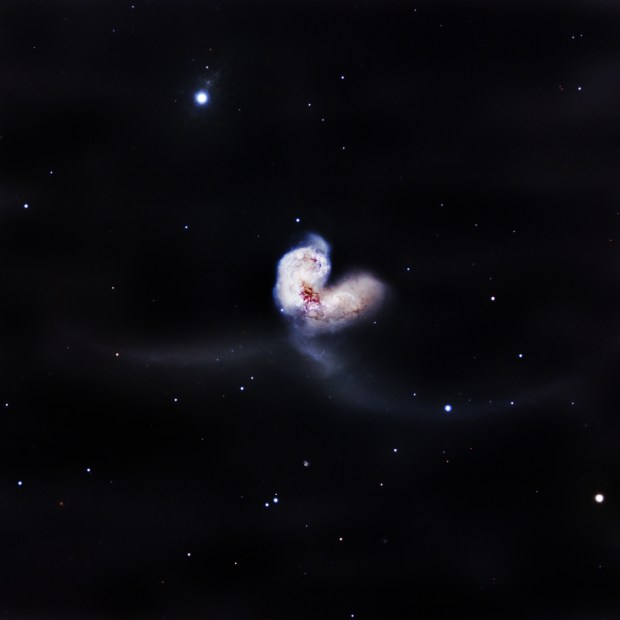
NGC 4038/9, known as the Antennae or Ringtail galaxies, are a well-known pair of colliding galaxies in Corvus. Halton Arp designated them No. 244 in his famous 1966 Catalogue of Peculiar Galaxies. The duo started as a normal and barred spiral that began interacting an estimated 900 million years ago, when life on Earth was just beginning to blossom into multicellular organisms. During the Cambrian Period some 500 million years ago, while trilobites were crawling in our oceans, the two galaxies passed through one another. During the Coal Age 300 million years ago, stars and gas were being flung from the galaxies out into the intergalactic medium, beginning their journey to create the “antennae” visible in photographs today. If you prefer the Ringtail moniker, the “ring” is the now-ragged spiral, NGC 4039, while the “tail” is what’s left of the barred spiral, NGC 4038.
One of the reasons these galaxies are so bright is that they are in starburst mode. The collision sent shock waves through them, compressing gases and increasing the rate of star formation. Such starburst galaxies are well documented. At an estimated 45 million light-years away, these aren’t even the closest examples. M82 in Ursa Major is only 12 million light-years distant and NGC 253 in Sculptor is 10 million light-years away.
Nonetheless, 11th-magnitude NGC 4038/9 are some of the easiest interacting galaxies to find. Look 3.5° southwest of Gamma (γ) Corvi (or ¾° north of 31 Crateris). Their weird shape can be seen in small telescopes. Large scopes reveal uneven brightness due to patches of star clouds and dark nebulae typical of many starburst galaxies. Both nuclear regions are visible with larger telescopes. This may be a glimpse of what M31 and the Milky Way might look like in a few billion years — who knows!









